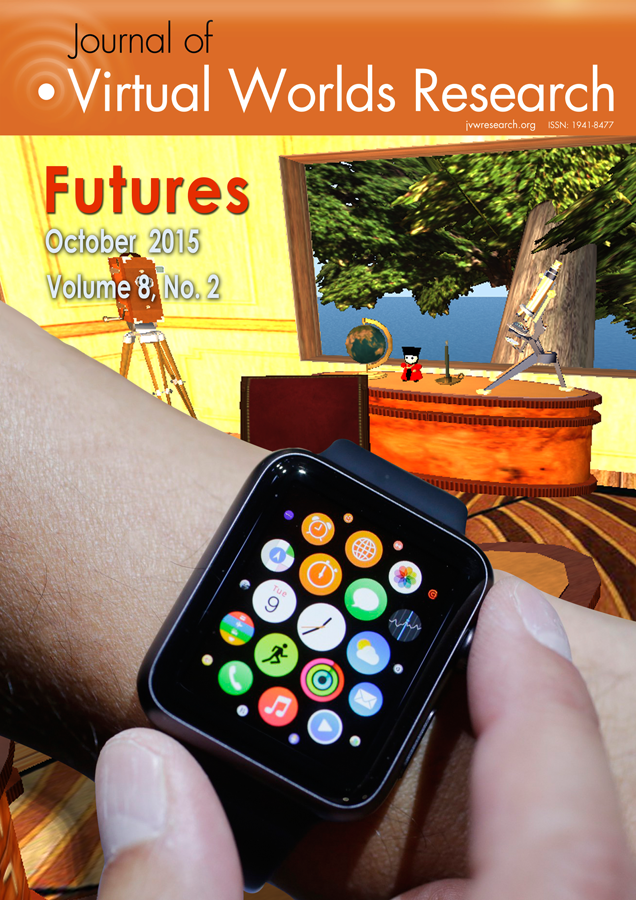Being There: Implications of Neuroscience and Meditation for Self-Presence in Virtual Worlds
DOI:
https://doi.org/10.4101/jvwr.v8i2.7164Keywords:
presence, meditation, neuroscienceAbstract
New discoveries in neuroscience show that the human brain and body work together to experience and evaluate emotions and thoughts and to create a felt sense of presence in the material (or virtual) world. The brain engenders (creates) bodily feelings that represent emotions and thoughts. By directing attention to present moment bodily sensations we experience embodied presence. Practicing meditation increases the capacity and propensity to experience embodied presence. Virtual worlds are experienced by the human system that is deeply grounded in bodily sensations. In this essay we explore the implications of neuroscience and meditation for designing and studying self-presence in virtual worlds. We explain how presence is a dynamic, ongoing internal process that is the active result of sustained directed attention.


